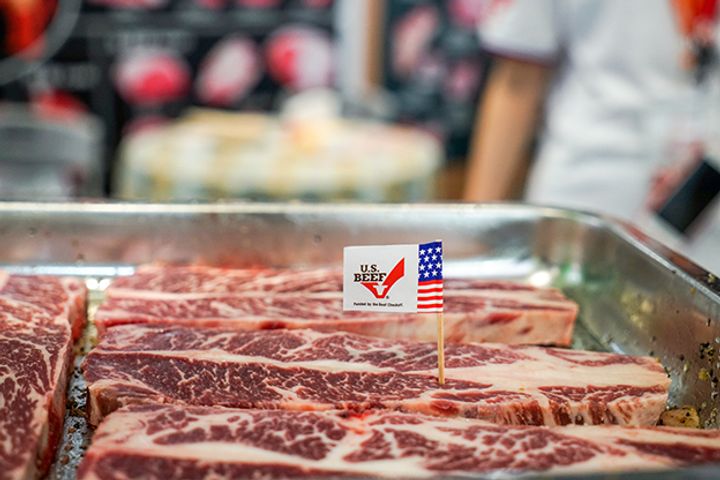 China Stays Bullish on Foreign Beef as Imports Top 1 Million Tons, Will Double in Five
China Stays Bullish on Foreign Beef as Imports Top 1 Million Tons, Will Double in Five(Yicai Global) Jan. 28 -- China imported 105,000 tons of beef in December and 1 million tons in all of last year, exceeding 1 million tons for the first time since the country's imports started their steady upward spiral in 2012.
That figure is expected to reach 2 million tons five years from now, data from China's General Administration of Customs show.
Yet high costs constrain the growth of China's domestic beef production even as consumption rises. The country cracked down severely on smuggling last year in a campaign that considerably crimped that supply source.
The African Swine Fever outbreak in August last year has taken a big bite out of pork consumption, and the futures market is turning its gaze to winter beef, thus further whetting the appetite for bovine imports. All are reasons for their upward trajectory.
China's landing of over 1 million tons of beef is a landmark and rapid growth of the foreign product is set to hold for the next decade, Lin Guofa, research director of online-to-offline agricultural-product platform operator Beijing BRIC Agriculture Information Technology Group, said in an interview with Yicai Global.
At about 60 kilograms per capita, China's meat consumption is twice the world average. The flesh of Chinese choice is pork, however, and the country's ingestion of beef and mutton is far below the world average, Lin noted.
Imported beef is higher in quality and lower in price than China's produce and thus very competitive. The nation's stock-breeding industry chain needs to improve. Its output has expanded in recent years, but breeding is underdeveloped, and costs are prohibitive.
Beef Bottleneck
The domestic supply is tight right now. High land prices and feed costs are a choke point in the development of animal husbandry and beef stocks have plunged in consequence.
A drop in the number of brood cows has also further shrunk stocks.
The gap between demand and supply has continued to grow in China since 2013, with the former rising, but availability declining, spawning a shortfall of 967,000 tons in 2017, sector statistics show.
Australia and New Zealand provide most of China's fresh cold-chain beef to feed demand for the high-end product.
South America has also fueled the growth of beef imports in recent years. Brazil's contribution climbed to more than 300,000 tons last year from 56,000 tons in 2015, while Argentina's shipments doubled from 2016 to 2018 to pass 170,000 tons.
South America is expected to send ever more beef to China, up to 1.8 million to 2 million tons by 2024.
China has imported cattle since 2016, with Oceania their main source. The animals also enter China on the hoof via land routes bordering Yunnan and Guangxi provinces.
Smugglers also drive live Brahman cattle into the country from neighboring Myanmar.
A large-scale illicit trade still flourishes along China's southwestern frontiers. The smuggling of beef and its offal -- the latter mainly for use in Sichuan's fiery stew-like hotpot -- will fall with the intensifying crackdown, while the growing market gap will goad ever more imports.
Editor: Ben Armour